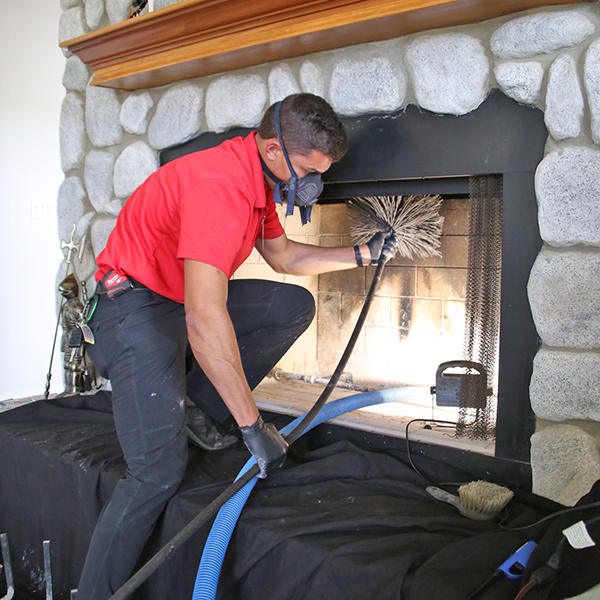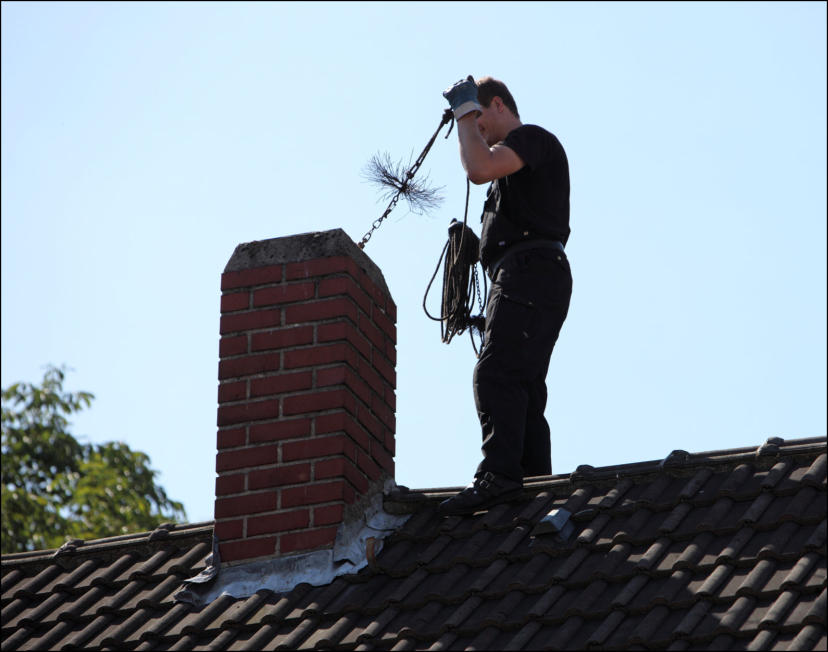Finest Chimney Clean Company Fremont: Your Partner for a Cleaner, Safer Home
Finest Chimney Clean Company Fremont: Your Partner for a Cleaner, Safer Home
Blog Article
Why Regular Chimney Cleansing Is Vital for Home Safety
Routine chimney cleansing is a frequently forgotten yet vital aspect of keeping a secure and safe and secure home atmosphere. While it may not be the most exciting or glamorous task on your order of business, ignoring smokeshaft upkeep can have significant consequences. The accumulation of residue and creosote in your smokeshaft can posture a significant fire risk, while bad air flow can cause the possibly harmful threats of carbon monoxide gas poisoning. Moreover, regular smokeshaft cleansing can aid expand the life expectancy of your chimney, saving you from expensive repairs or substitutes down the line. How specifically does smokeshaft cleaning contribute to home safety and security? Let's discover the factors behind this essential upkeep job and find the pointers for appropriate chimney treatment that every property owner ought to know.
Significance of Normal Chimney Cleansing
Routine smokeshaft cleansing is crucial for preserving a efficient and safe home atmosphere. Over time, creosote, an extremely combustible material, constructs up inside the chimney.
In enhancement to stopping fires, normal smokeshaft cleansing additionally makes sure the reliable procedure of your heating system. When creosote builds up, it limits the air movement with the chimney, leading to poor burning and lowered heating efficiency.
Furthermore, a clean smokeshaft promotes excellent indoor air top quality. As the chimney comes to be blocked with creosote and particles, it can hinder the correct venting of unsafe gases, such as carbon monoxide.
Fire Danger: Accumulation of Soot and Creosote
The buildup of residue and creosote inside the smokeshaft presents a significant fire hazard, as it can ignite and create a possibly destructive smokeshaft fire. Soot is a black, carbonaceous material that is formed when timber or nonrenewable fuel sources are shed. It is composed of fine bits that can conveniently become airborne and resolve inside the chimney. In time, these fragments create a layer and accumulate of soot. Creosote, on the other hand, is a very combustible and sticky compound that is generated when timber or nonrenewable fuel sources are burned at lower temperature levels. It is a result of insufficient burning and can follow the internal wall surfaces of the chimney.
Both residue and creosote are very combustible. When a fire is lit in the fireplace or stove, the warmth and flames climb up the smokeshaft. These materials can create a smokeshaft and spark fire if there is a considerable accumulation of soot or creosote. The intense warmth generated during a smokeshaft fire can create the chimney to crack or collapse, leading to a potential residence fire. In enhancement, the flames and triggers from the chimney fire can escape via the smokeshaft cap and fire up the roof or bordering combustible materials.

Routine chimney cleaning is vital to remove the build-up of residue and creosote and decrease the threat of a smokeshaft fire. An expert smokeshaft move will make use of specific brushes and tools to extensively clean up the smokeshaft, eliminating any gathered particles. By keeping the smokeshaft clean and cost-free from residue and creosote, homeowners can make certain the risk-free and reliable operation of their fire place or range, while additionally securing their home from the dangers of a chimney fire.
Poor Ventilation and Carbon Monoxide Gas Risks
Not enough ventilation in smokeshafts can pose severe risks of carbon monoxide gas poisoning. Carbon monoxide gas (CO) is an anemic, odor free gas that is generated when fuels such as wood, oil, or gas are shed. When smokeshafts are not properly aerated, carbon monoxide can develop and leak right into the home of a home, resulting in potentially life-threatening scenarios.
One of the main sources of inadequate chimney air flow is the accumulation of particles, such as residue and creosote, which can block the flue and restrict the flow of air. This can lead to insufficient burning and the production of higher levels of CO. In addition, a smokeshaft that is not frequently cleansed can have a build-up of other obstructions, like bird nests or leaves, further hindering the appropriate air flow of unsafe gases.
The effects of carbon monoxide poisoning can be subtle and quickly misinterpreted for various other ailments, such as the influenza. Signs and symptoms may include headaches, dizziness, fatigue, complication, and nausea or vomiting. Long term direct exposure to high degrees of CO can result in unconsciousness, organ damages, and also death.
Routine chimney cleansing and examination are critical in keeping appropriate air flow and decreasing the danger of carbon monoxide poisoning. By getting rid of any kind of obstructions and guaranteeing that the you can find out more flue is clear, property owners can take pleasure in a risk-free and healthy living setting. It is suggested to have smokeshafts checked and cleaned at least yearly by an expert chimney move to make sure optimal safety and security and comfort.
Extending the Life-span of Your Chimney
To ensure the long life of your chimney, correct maintenance and care are necessary. Routine smokeshaft cleaning is not just essential for home safety however also for extending the life-span of your chimney. Over time, particles, soot, and creosote can gather inside the chimney, bring about different concerns that can considerably reduce its life expectancy.
Among the main advantages of normal chimney cleaning is the avoidance of smokeshaft fires. Creosote, a black, tar-like substance formed by the incomplete burning of wood, is extremely combustible. If not eliminated, it can develop inside the chimney and fire up, creating a hazardous and possibly disastrous smokeshaft fire. By routinely cleaning up the smokeshaft, you can eliminate this buildup and reduce the danger of a fire.
Furthermore, regular chimney cleaning also helps to avoid obstructions. When debris, such as fallen leaves, branches, and even tiny animals' nests, obstruct the chimney, it can prevent correct air flow and air movement. This can bring about a build-up of damaging gases, such as carbon monoxide gas, inside the home. By maintaining the chimney tidy and clear, you can make sure appropriate ventilation and lower the danger of carbon monoxide gas poisoning.
In addition to protecting against clogs and fires, routine chimney cleansing can likewise identify and address any kind of prospective damage or damage. By checking the smokeshaft throughout the cleaning procedure, you can catch any very early indications of cracks, leakages, or structural concerns. Trigger repairs can be made to stop additional damage and prolong the lifespan of your smokeshaft.
Tips for Appropriate Smokeshaft Maintenance
For reliable chimney upkeep, it is necessary to follow a couple of key pointers to guarantee the long life and security of your smokeshaft. These ideas will not just aid you preserve the efficiency of your smokeshaft but additionally minimize the threat of chimney fires and various other potential dangers.
Firstly, it is crucial to have your smokeshaft inspected and cleaned up by a specialist chimney sweeper a minimum of when a year. A specialist will be able to recognize any prospective concerns such as creosote build-up, animal nests, or structural damages that can pose a risk to your smokeshaft's efficiency and safety.
Along with yearly examinations, it is very important to on a regular basis examine and clean your chimney's flue and cap. The flue must be clear of any type of particles like it or blockages that can restrict airflow or cause smoke to back up into your home. The chimney cap must remain in excellent problem, firmly attached, and without any type of fractures or damage to stop undesirable visitors such as birds or squirrels from entering your smokeshaft.
Furthermore, it is vital to utilize dry and experienced wood for burning in your fire place. Wet or environment-friendly timber generates more smoke and creosote, resulting in a greater danger of chimney fires. Furthermore, prevent shedding materials such as trash, cardboard, or treated timber, as they can launch unsafe chemicals and harm your smokeshaft.
Finally, make sure that your chimney is geared up with a durable spark arrestor to prevent embers and triggers from running away and possibly triggering a fire. Chimney Clean Company Fremont.
Following these tips for correct smokeshaft maintenance will assist guarantee the safety and see page long life of your smokeshaft and offer assurance for you and your family members.

Verdict
In conclusion, regular chimney cleaning is essential for preserving home security. The build-up of soot and creosote can result in fire risks, while bad ventilation can enhance the risk of carbon monoxide poisoning. By routinely cleaning and maintaining your smokeshaft, you can expand its life-span and make sure the security of your home and household. It is necessary to follow proper smokeshaft upkeep ideas to avoid any type of prospective dangers.

One of the main advantages of routine chimney cleaning is the avoidance of smokeshaft fires - Chimney Clean Company Fremont. The chimney cap should be in excellent condition, safely attached, and cost-free of any kind of fractures or damage to protect against undesirable guests such as birds or squirrels from entering your chimney
Report this page